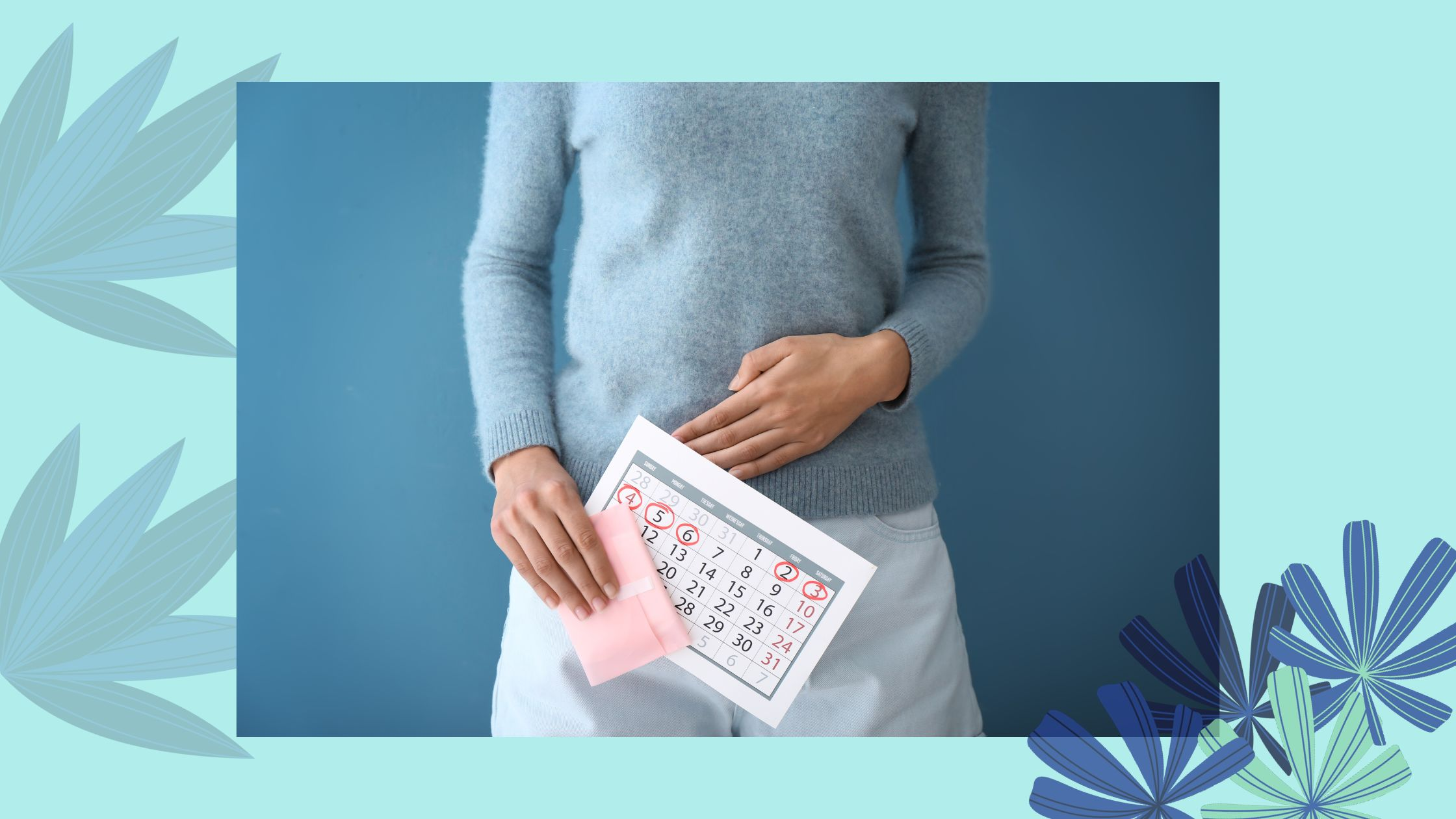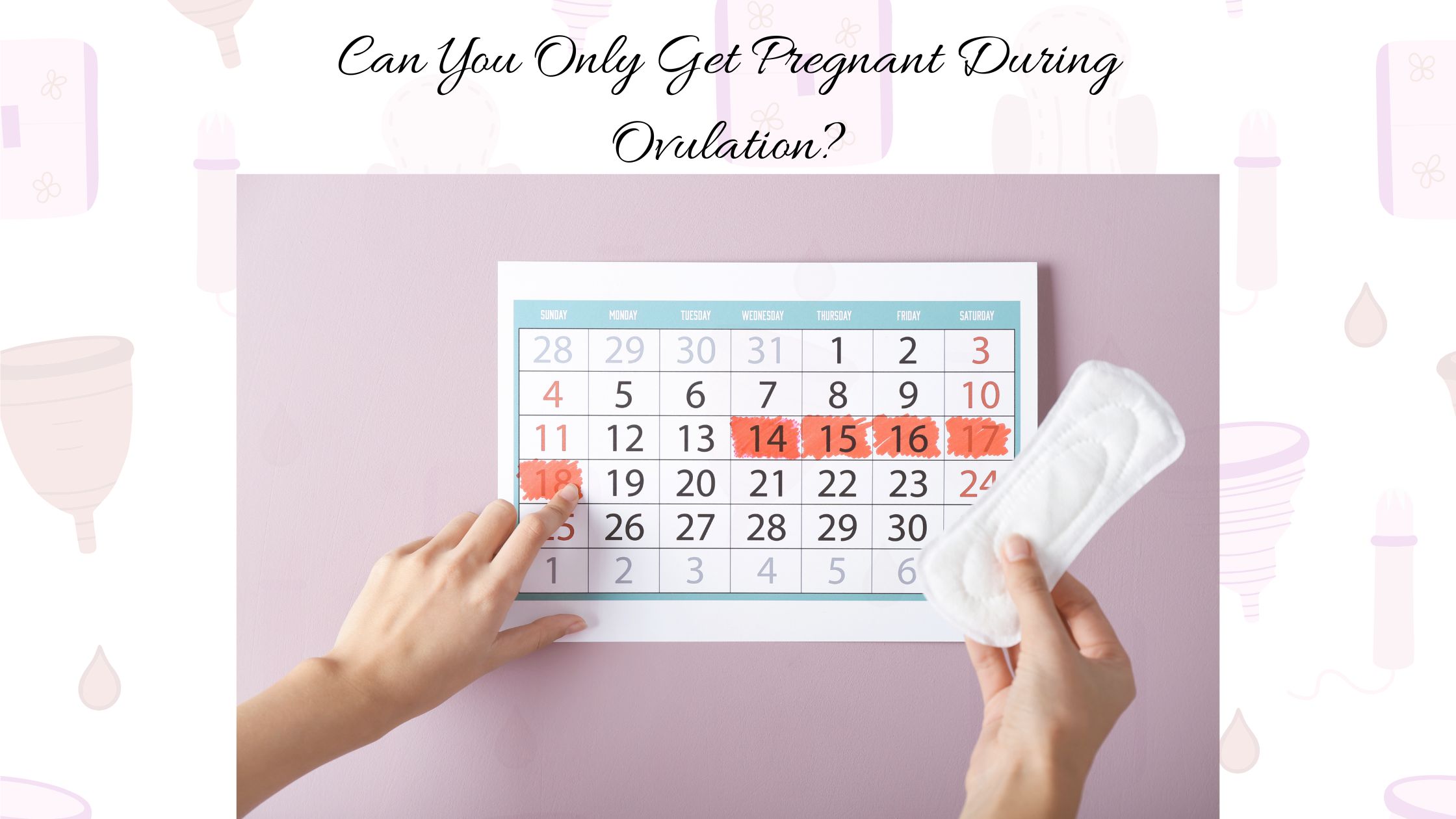Understanding your menstrual cycle and ovulation is important whether you’re itching to start a family or keen on steering clear of an unexpected addition. Ovulation, in particular, is crucial when it comes to conception. This is when your body releases a mature egg ready for fertilization.
Now, you might wonder, “What if I’m not ovulating? Can I still get pregnant?” It’s a common question with a pretty straightforward answer: No ovulation, no pregnancy. But understanding when you’re ovulating is a game-changer. Many women track their cycles using ovulation predictor kits to pinpoint this fertile window, hoping to boost their chances of conception.
But what’s the real deal about getting pregnant? Is it a calendar game, or is there more to it? This article will explain everything about when conception is possible and when it’s not.
Understand Your Menstrual Cycle

Your menstrual cycle is a series of four stages: menstruation, the follicular phase, ovulation, and the luteal phase. While each stage is vital in the reproductive process, ovulation is the critical time for conception. It is when an egg is released and is available for fertilization for about 24 hours. Sperm, on the other hand, can survive up to five days in the right conditions, creating a fertility window of approximately six days each cycle when conception is possible.
The menstrual cycle begins with the follicular phase, the first day of your period. During this time, your body releases hormones, especially follicle-stimulating hormone (FSH), to prepare eggs for release and to thicken your uterus lining for a potential pregnancy.
An average menstrual cycle lasts between 28 and 35 days, with ovulation typically occurring between days 11 and 21. This is when luteinizing hormone (LH) peaks and prompts the release of an egg. Interestingly, out of the roughly million eggs you’re born with, only 300 to 400 will be released in your lifetime.
To maximize the chances of conception, the ideal time for intercourse is 1-2 days before ovulation. Tools like ovulation predictor kits can help pinpoint this fertile window.
After ovulation, the hormone progesterone dominates to prepare the uterus for a potential embryo. If fertilization doesn’t occur, the lining, the unfertilized egg, and some blood is shed during your period, which lasts between 3 to 7 days before the cycle begins anew. Knowing the ins and outs of these stages can significantly benefit those trying to conceive or simply looking to understand their body’s rhythms.
Your Chances of Getting Pregnant During Ovulation
The best time to conceive is during the “fertile window,” which spans five days before ovulation and one day after. Sperm can live up to five days in the reproductive tract, allowing days-old sperm to fertilize an egg within 24 hours of its release. For couples trying to conceive, it’s advisable to engage in intercourse several times around this period. However, predicting the exact time of ovulation can be challenging due to varying cycle lengths and durations.
At-home ovulation test kits can be used to overcome this. These kits detect a surge in luteinizing hormone approximately 36 hours before ovulation. Following a positive test result, it’s recommended to have intercourse within the next 24 to 36 hours, utilizing the sperm’s ability to survive for several days in the reproductive tract.
Additionally, monitoring changes in basal body temperature and cervical mucus can further indicate fertility. A slight rise in body temperature signals ovulation, and cervical mucus that increases in amount and resembles egg whites suggests an optimal time for intercourse. These methods offer a practical approach to identifying the fertile window for those aiming to conceive.
Your Chances of Getting Pregnant After Ovulation
The luteal phase of your menstrual cycle occurs after ovulation and lasts until the start of your next period. During this time, the hormone progesterone rises, leading to drier cervical mucus and a vaginal environment less hospitable to sperm. The likelihood of conceiving drops significantly post-ovulation, as the egg is only viable for fertilization 12 to 24 hours after its release. While a second egg might occasionally be released, it’s rare.
For those using fertility awareness as a method of birth control, the luteal phase is often considered a safer time to have unprotected sex. However, it’s important to remember that no method is foolproof, and there’s always a potential risk of pregnancy when fertile eggs and sperm are involved. Careful monitoring and understanding of the cycle’s phases are crucial for effectively using this method.
Your Chances of Getting Pregnant During Your Period
It’s a misconception that pregnancy can’t occur during menstruation; while rare, it’s still possible. Women with shorter menstrual cycles, typically around 21 to 24 days, are particularly at risk. Since sperm can survive several days in the body, early ovulation can lead to pregnancy from intercourse during your period.
Menstruation, marking the start of the cycle, is the shedding of the uterus lining and usually happens between days 21 and 35. After menstruation begins, the body prepares for the next cycle, with hormone levels rising to rebuild the uterus lining and follicles developing in the ovaries.
Most women ovulate well after their period, often around day 14 in a typical 28-day cycle, but this can vary greatly. Since pregnancy requires an egg and it’s unlikely for an egg to be released during your period, the chances of conceiving from sex during this time are generally low.
However, if one has sex towards the end of their period and then ovulates shortly after, the sperm’s lifespan of up to five days means pregnancy could occur. Therefore, for those not looking to conceive, it’s wise to use contraception consistently, even during menstruation, to mitigate any risk of unwanted pregnancy.
Your Chances of Getting Pregnant Right After Your Period
Although it’s relatively uncommon, it is indeed possible to become pregnant immediately after your period, particularly for those with shorter menstrual cycles. Sperm can survive up to five days in fertile cervical mucus, so having sex just after menstruation can still lead to pregnancy even if you haven’t started ovulating yet. This is particularly true for those with shorter cycles who might ovulate soon after their period ends.
The fertile window varies and typically occurs between cycle days 7-21, but this can differ based on individual cycle lengths. In shorter cycles of around 24-25 days, the fertile window could be days 6-11, while in longer cycles of about 35 days, it might be days 16-21. As you approach closer to ovulation, the likelihood of conception increases.
For those aiming to conceive, engaging in sexual intercourse every couple of days ensures that sperm are consistently available to fertilize the egg once it’s released. The optimal strategy would be to start having regular sex—ideally two to three times a week or every other day—right after the period ends to cover the pre-ovulation period.
For those with irregular cycles, fertility tracking apps can provide more personalized and accurate information regarding the fertile window and optimal times for conception. While it’s less likely to get pregnant right after your period, it’s not entirely out of the question.
Cycles Without Ovulation: Can You Conceive?
Ovulation, much like menstrual periods, can be irregular. The specific day you ovulate might change with each cycle, and sometimes, ovulation might not occur at all, which is a normal variation.
Irregular ovulation occurs due to a lack of coordination between the ovaries and the pituitary gland, the hormone control center located at the base of the brain. When these two aren’t effectively communicating, the timing of egg release can be unpredictable.
Anovulation: What Can It Mean?
Anovulation refers to a cycle where the ovaries release no egg. In such cycles, women might experience some bleeding, which is often due to the build-up of the uterine lining or a decrease in estrogen rather than an actual period. This condition is particularly significant for those trying to conceive, as it eliminates the possibility of fertilization during the cycle, contributing to about 25% of all cases of female infertility.
Experiencing anovulatory cycles occasionally is normal and is particularly common at the beginning of menstruation or nearing menopause. These are times of hormonal imbalance in the body, which can disrupt the regular ovulation process.
Is It Physically Possible to Get Pregnant if You’re Not Ovulating During a Cycle?
In cycles where ovulation does not occur, pregnancy cannot happen as there is no egg released for the sperm to fertilize. However, some treatments can stimulate the release of a mature egg, making conception possible.
Suppose you’re facing difficulties in conceiving and suspect ovulation problems. In that case, it’s important to consult a healthcare provider to explore these treatment options and find a solution tailored to your needs.
Takeaway
- Pregnancy is most likely during the six-day fertile window — five days before and one day after ovulation.
- The timing of the fertile window can change each month due to irregular ovulation.
- Consistent use of contraception is essential to avoid pregnancy due to the variable timing of ovulation.
- For those trying to conceive, having sex one day before ovulation is often the most effective.
- In cycles without ovulation (anovulatory), conception is impossible as no egg is available for fertilization.
Frequently Asked Questions (FAQs)
Can You Get Pregnant When You’re Not Ovulating?
Yes! It is possible to get pregnant even when you’re not in the midst of your typical ovulation period. This is because the exact timing of ovulation can vary from month to month, and sperm can survive inside the body for several days, making pregnancy feasible at nearly any point in the menstrual cycle. Therefore, if you’re looking to avoid pregnancy, remember that there isn’t a completely “safe” time during the month for unprotected sex. Using contraception consistently is the key to preventing unwanted pregnancy.
When Are You More Likely to Conceive?
The “fertile window” refers to the period in a woman’s menstrual cycle when she has the highest chance of getting pregnant. This period varies among women because it’s tied to the individual length of their menstrual cycles.
Specifically, the fertile window includes the day of ovulation — when an egg is released from the ovary — and the five days leading up to it. Engaging in sexual intercourse during these days significantly increases the likelihood of conception.
Can You Get Pregnant Any Time of the Month?
While the likelihood of conceiving is greatest during ovulation, it’s still possible to become pregnant from sexual activity at any point in the menstrual cycle.
When Is the Least Likely Time to Get Pregnant?
The week of your period is generally when you are least likely to conceive, particularly if you have regular monthly periods. During menstruation, as your body sheds blood, cervical mucus, and tissue, ovulation is still several days away, reducing the likelihood of pregnancy. However, there remains a slight chance of conception.
To better understand and navigate these probabilities, it’s essential to know the specifics of your menstrual cycle, identify your fertile days each month, and discern if your bleeding is a regular period or potentially a symptom of hormonal imbalance.
References
"Trying to Get Pregnant? Here's When to Have Sex." American College of Obstetricians and Gynecologists. 2022."Periods and fertility in the menstrual cycle." NHS, 05 Aug. 2019, https://www.nhs.uk/conditions/periods/fertility-in-the-menstrual-cycle/"Fertility Awareness-Based Methods of Family Planning." American College of Obstetricians and Gynecologists. Reviewed 2022."Cervical Mucus Monitoring." UNC School of Medicine.Is the probability of having twins determined by genetics? MedlinePlus [Internet]—National Library of Medicine."Having a Baby After Age 35: How Aging Affects Fertility and Pregnancy." American College of Obstetricians and Gynecologists. Updated 2023."Female Infertility." StatPearls [Internet]. Updated 2022
